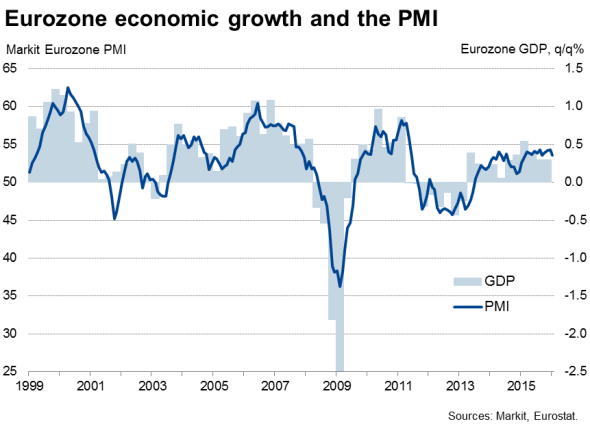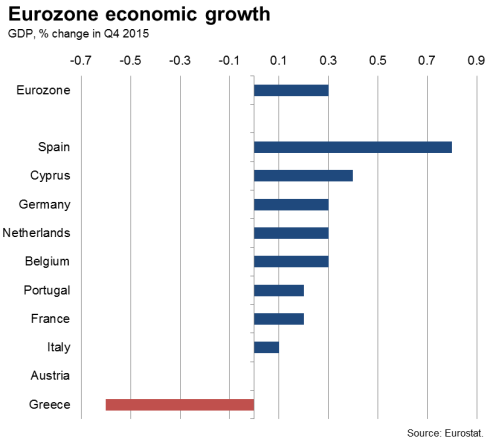Spain stands out as bright light amid sluggish fourth quarter eurozone growth
Official data confirm the steady but disappointingly unspectacular growth achieved by the eurozone at the end of last year. Gross domestic product (GDP) expanded 0.3% in the final quarter of 2015, according to Eurostat, identical to the pace seen in the third quarter. That meant the region grew just 1.5% over 2015 as a whole.

The coming year also looks challenging. January PMI survey data have already indicated a limp start to 2016, showing one of the weakest expansions seen over the past year. Although there are signs of renewed life in the region, linked in part to the weak euro helping spur exports, factors such as the migrant crisis, political uncertainty, high unemployment and sluggish global demand all pose downside risks to the outlook.
Of the major eurozone members, Spain was the star performer, leading the expansion with a 0.8% increase in GDP in the final quarter of 2015. Germany, the Netherlands, France and Italy all saw much weaker rates of expansion of 0.3%, 0.3%, 0.2% and 0.1% respectively.

Belgium meanwhile saw just 0.3% growth; Portugal mustered a mere 0.2% expansion; Austria stagnated; and Greece's economy contracted by 0.6%, thereby sliding back into a technical recession.
With the exception of Spain, the fourth quarter growth rates are clearly frustratingly modest to a central bank that has taken repeated steps to stimulate growth and augurs for further policy action in March.
Chris Williamson | Chief Business Economist, IHS Markit
Tel: +44 20 7260 2329
chris.williamson@ihsmarkit.com
